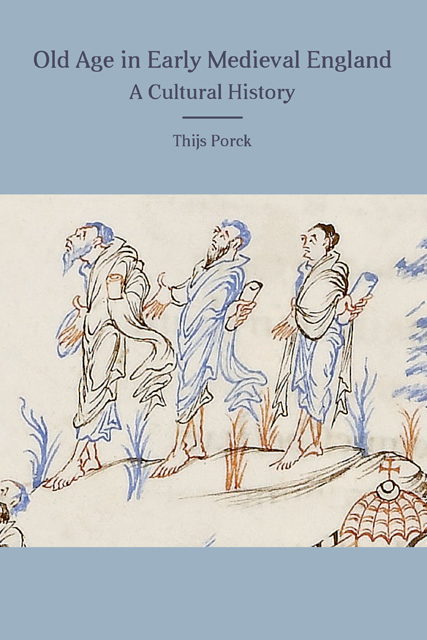Book contents
- Frontmatter
- Contents
- Illustrations
- Acknowledgements
- Abbreviations
- Introduction
- 1 Definitions of Old Age
- 2 Merits of Old Age
- 3 Drawbacks of Old Age
- 4 frode fyrnwitan: Old Saints in Anglo-Saxon Hagiography
- 5 hare hilderincas: Old Warriors in Anglo-Saxon England
- 6 ealde eðelweardas: Beowulf as a Mirror of Elderly Kings
- 7 gamole geomeowlan: Old Women in Anglo-Saxon England
- Conclusion
- Bibliography
- Index
- Anglo-Saxon Studies
Introduction
Published online by Cambridge University Press: 17 January 2023
- Frontmatter
- Contents
- Illustrations
- Acknowledgements
- Abbreviations
- Introduction
- 1 Definitions of Old Age
- 2 Merits of Old Age
- 3 Drawbacks of Old Age
- 4 frode fyrnwitan: Old Saints in Anglo-Saxon Hagiography
- 5 hare hilderincas: Old Warriors in Anglo-Saxon England
- 6 ealde eðelweardas: Beowulf as a Mirror of Elderly Kings
- 7 gamole geomeowlan: Old Women in Anglo-Saxon England
- Conclusion
- Bibliography
- Index
- Anglo-Saxon Studies
Summary
Sussex, England, over twelve hundred years ago. A young man named Cuthman led a desolate life; poor and homeless, he had to take care of his paralysed, widowed, elderly mother. To move around Cuthman carried his mother on a special barrow, which he suspended over his shoulders by means of a rope. One day, the rope broke and Cuthman had to replace it with plaited elder twigs. Some nearby mowers saw the incident and mocked his misfortune. Instantaneously, the mocking mowers were punished by a sudden tempest, which drove them from their field and ruined their crops. By this sign, Cuthman realised that God was on his side and he resolved to build a church wherever the rope substitute happened to break next. Reports differ as to what happened afterwards. According to one version of the story, the rope of elder twigs broke at Steyning, Sussex, where Cuthman’s church still stands. A second, more sensational version has Cuthman rid himself of his burdensome mother by hurling the elderly woman and her barrow down a hill; he then built his church wherever she crash-landed.
The two versions of Cuthman’s story raise several questions: was Cuthman’s mother’s survival into old age unique in Anglo-Saxon England, and would she have been respected for her old age or would she have been regarded as a burden? These two questions relate to two persistent presumptions with regard to old age in past societies: there were few to no elderly in the past, and those who did grow old were highly respected for their ‘rarity value’. In this introduction, these two presumptions will be considered within the context of early medieval England, c.700–c.1100. The first is touched upon only in this introduction, while the second is directly related to the overall topic of this book: the Anglo-Saxon cultural conceptualisation of old age.
The answer to the question of whether many people grew old in Anglo-Saxon England depends, in the first place, on how old age is defined. Gerontologists generally work with two different definitions. The first, ‘chronological age’, considers people old when they have lived for a specific number of years.
- Type
- Chapter
- Information
- Old Age in Early Medieval EnglandA Cultural History, pp. 1 - 15Publisher: Boydell & BrewerPrint publication year: 2019

